Mesquitetry
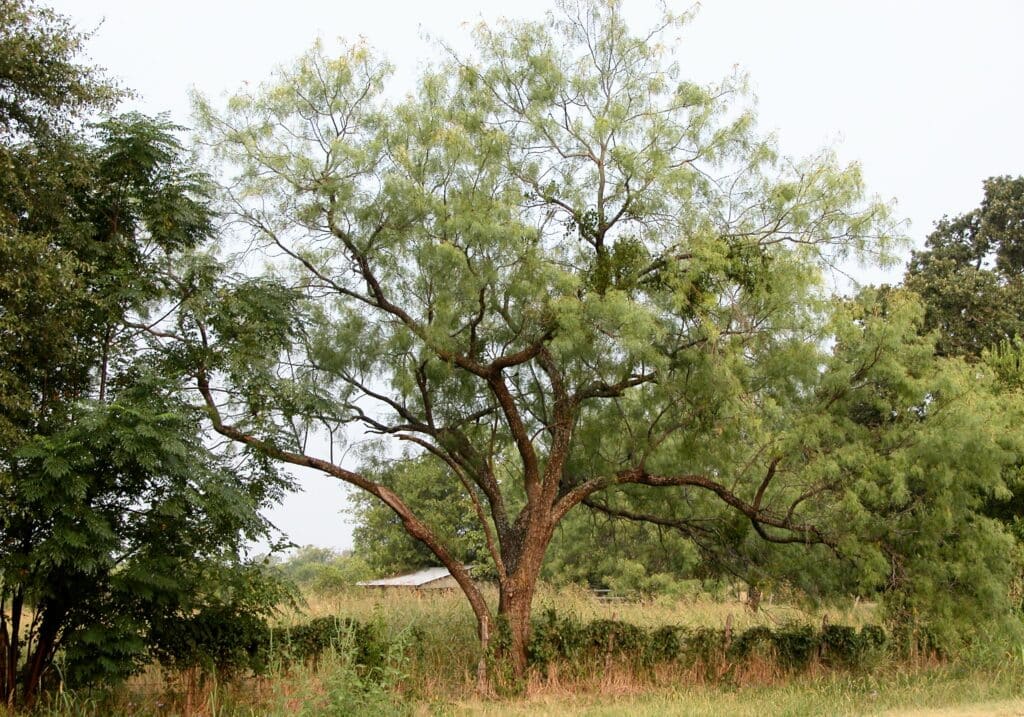
It’s a wood you’ll never forget, mesquite! More than interesting, more uniquely different. As my handsaw slipped through a cross-gain cut the strong and sweet essence wafted up in a split second and I was translated to a 35,000-acre ranch in south Texas watching a rattlesnake sidle up by the handle of my now silent chainsaw for the warmth of the motor. I was 36 years old, half the age I am now, I had just dropped a mesquite tree with a straight stem seven-eight feet long and had delimbed it ready to load. I figured it to be a ton and a half. Suddenly the tree limbs, laden with the sweet bean pods, were surrounded by a good-sized herd of longhorns chewing on the beans. This can be intimidating, but though I had been alone there for the day I never felt intimidated or frightened, just cautious and respectful. There was too much activity and retrieving my chainsaw from the snake with the crook of a branch was easy enough. The snake left and `i watched it until I knew where it resettled. I always carried a shotgun on my excursions, just for emergencies. I didn’t use it on such trips. I could usually work around killing an animal.
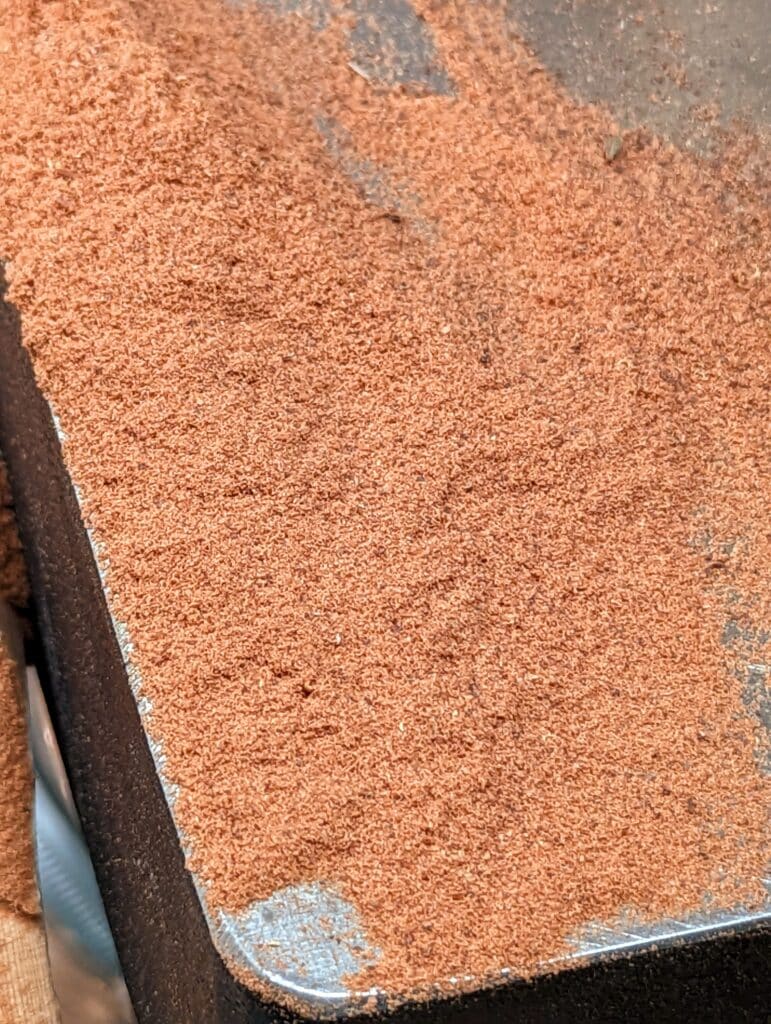
The scent in my garage studio carries a mix of finishes and mixed woods most of which I am unconscious of most of the time so the treat of mesquite was unique only to me. I ripped some strips on the bandsaw too and seeing the sawdust accumulate there on the table reminded me that the accumulation of good memories are recorded in the canyons of our minds for us to savour at later times when the feast might be less than it should be. Imagine the translative qualities of a simple and complex smell that can remind you of days working in a vast tract of mesquite 35 years ago and then a powdery heap of sawdust that emanates from the waste scraps burning hot in the woodstove to keep the family warm overnight in the sub-zero winters of Texas during an ice storm.
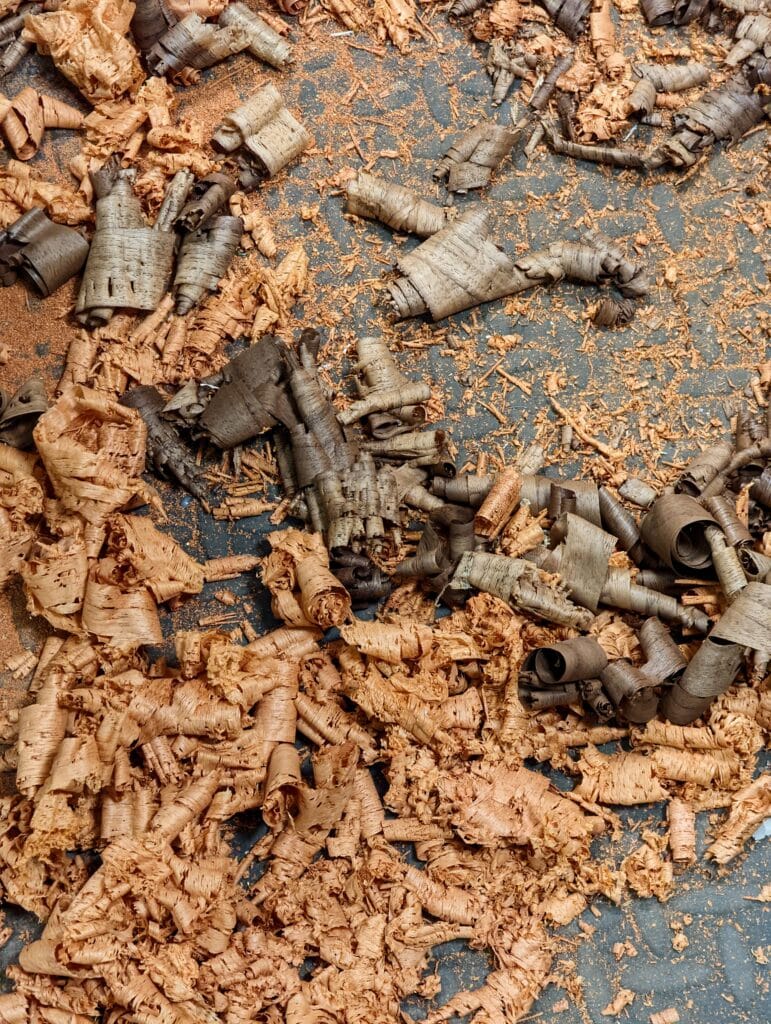
As I planed the stiles for my doors the accumulation of the rich red shavings contrasted with the walnut I’m working alongside the mesquite. Even the shavings of mesquite are different, actually unique to mesquite. You don’t get these types of shavings in other woods. I think it’s to do with both the hardness and brittleness of the wood itself. It’s not quite twice as hard as oak.
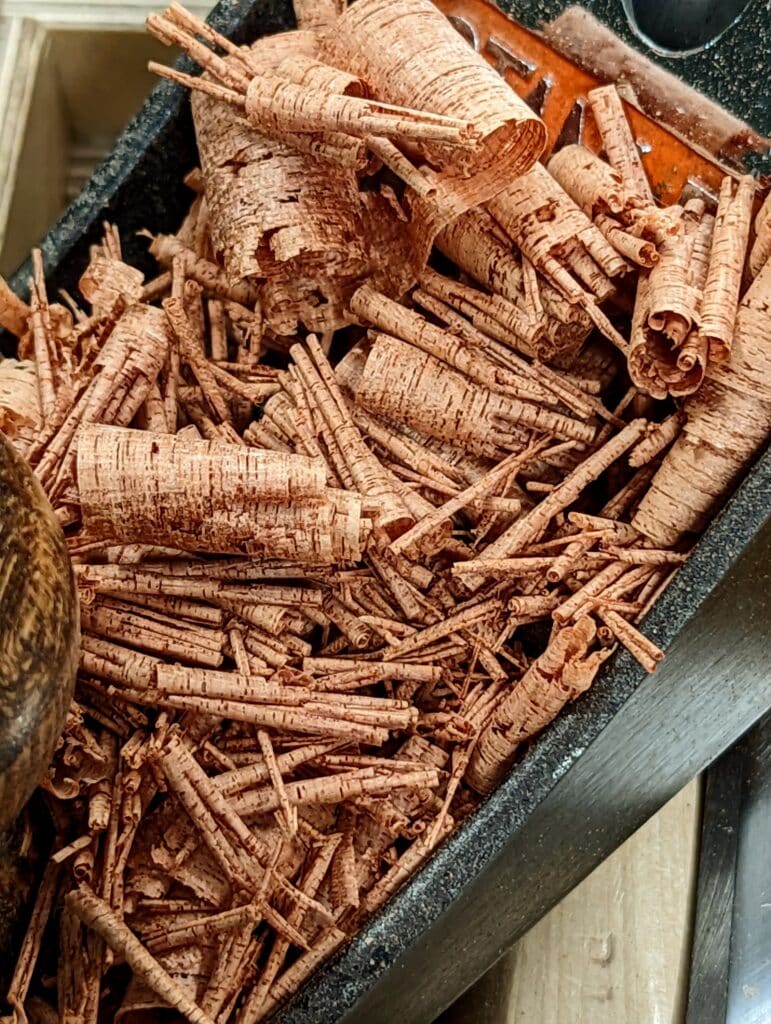
Some people have an allergy to mesquite and some develop an allergy through working it over a long time. I am careful with it when machining because of that. I too developed an allergy even though I took good precautions. I don’t have the allergy now but still, we must take care. We have a very sophisticated device for measuring our atmosphere for dust levels and though we do register, we are well below any levels of danger simply because of our hand work.
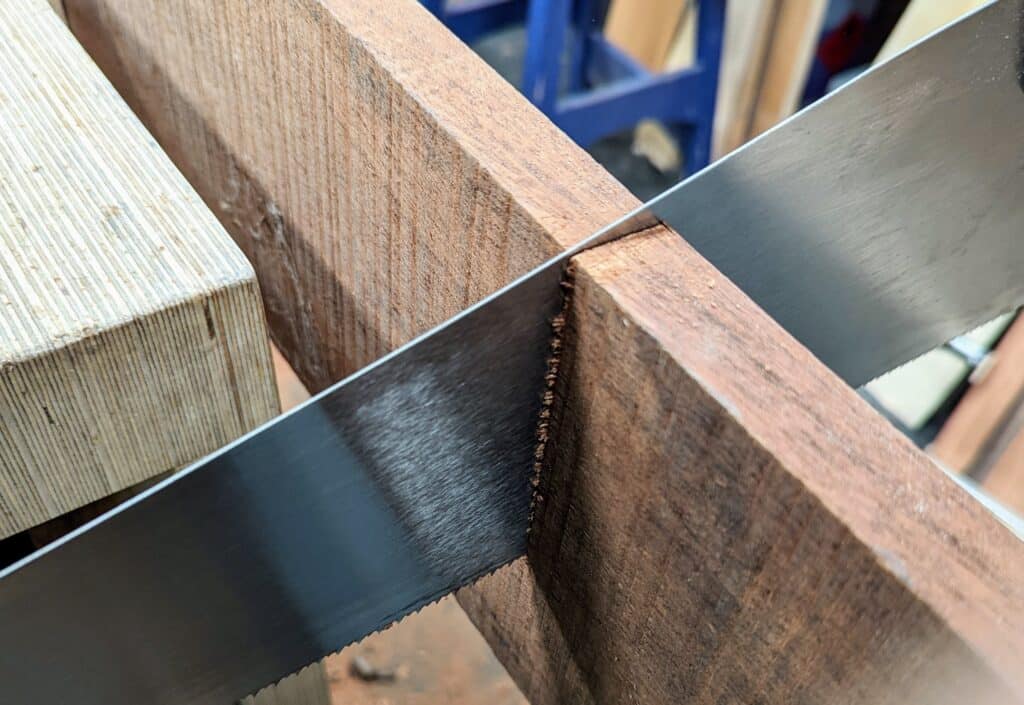
The handsaw and planing with a hand plane don’t register in the device at all. I like that. I also like the feel of both in mesquite because it is so very different though not always obliging. Very few woods argue with a #80 cabinet scraper . . . only the very softest ones really.
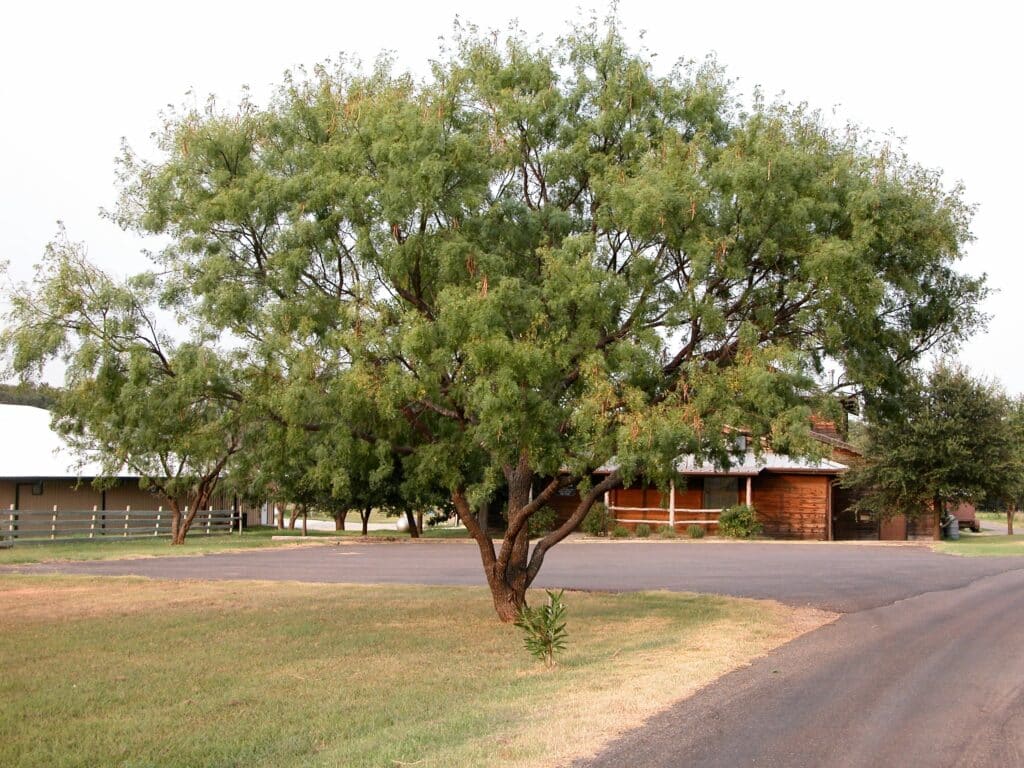
This mesquite tree standing outside a person’s business in Texas could be 50 years old. Mesquite is very slow growing and survives and even takes over where other trees cannot. The owner is a Texan born and bred and he was pretty precious about the tree. This is very typical of mesquite characteristic growth; lots of flailing branches from a short and almost non-existent stem. It makes the tree a good source for firewood logs as you cannot do much else with a tree like this unless you are very inventve.
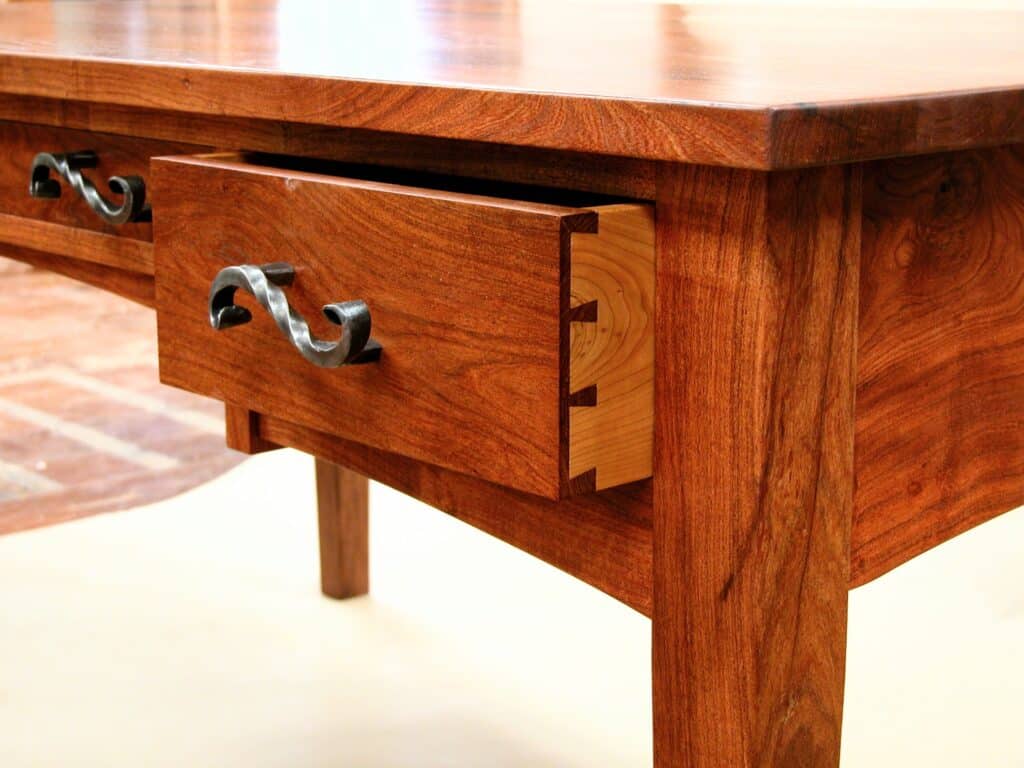
Mesquite does not readily plane by hand but when it does it is like glass and only declines in quality when you sand it no matter the fineness of the abrasive Mostly it will be machined before use because of its omnidirectional grain. Look at the top tree picture and imagine it in a hundred years more and you will see why. Even the branches in and of themselves twist and turn like a corkscrew.
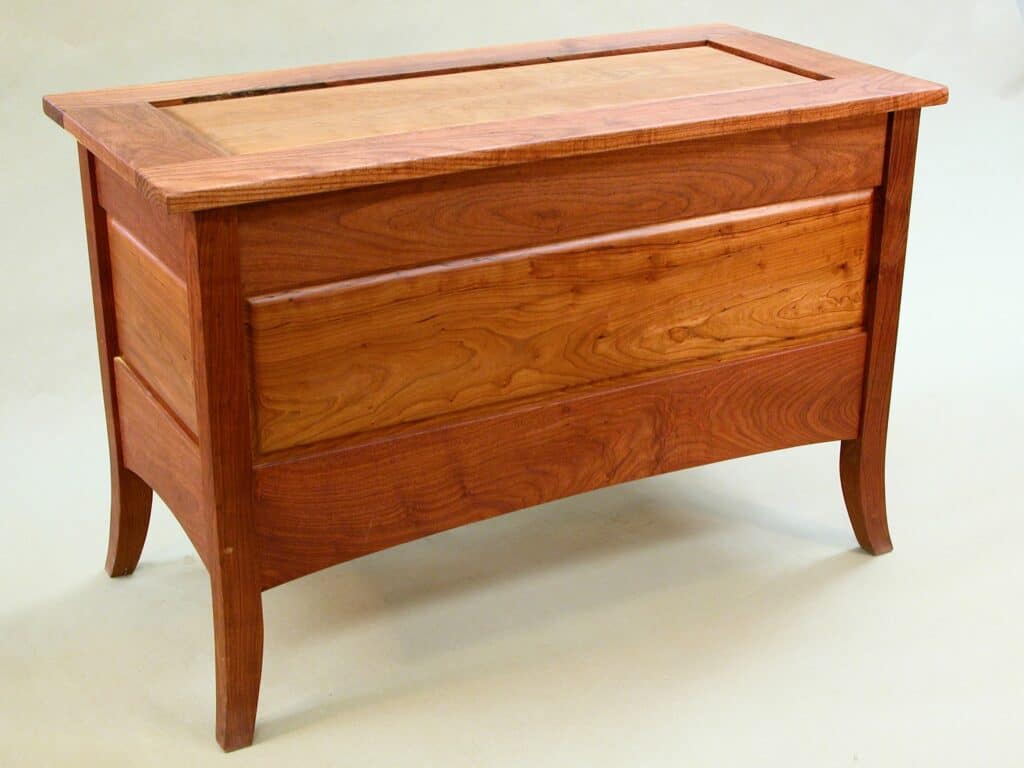
My new millennia version from 2018 was more complicated but it was another sycamore piece I liked. Notice the legs turned at 45º so this meant the legs were fire-sided with one wide face to the outside. This is a woodworking masterclasses project.
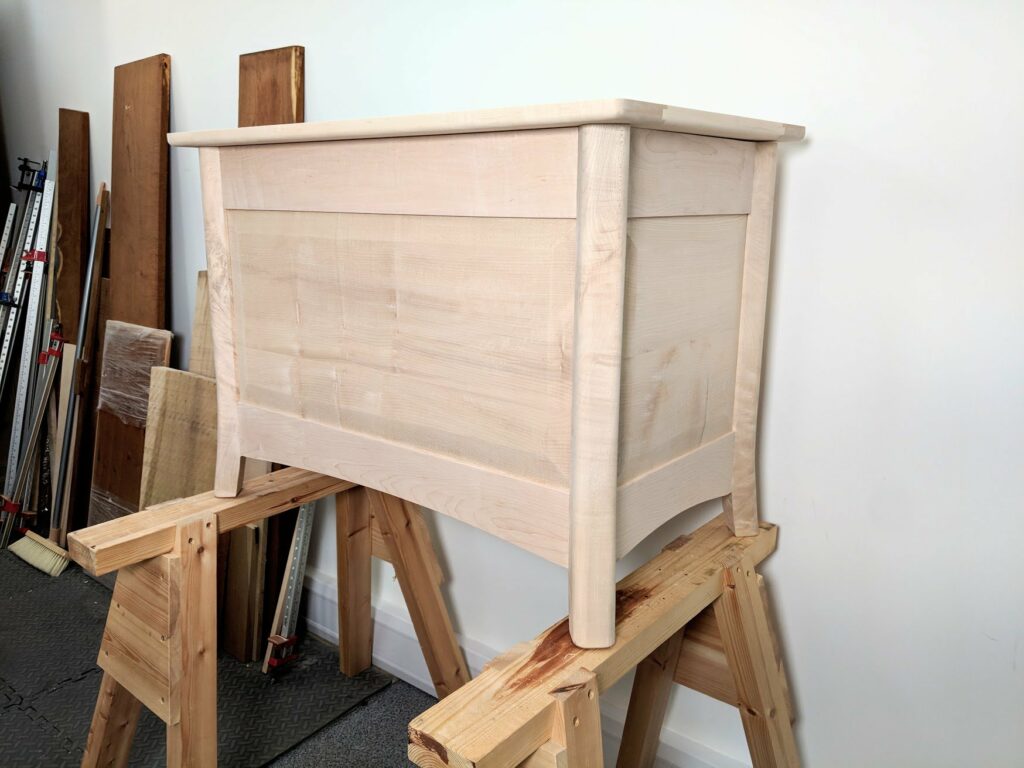
I have had ten good-sized boards for a couple of decades. After slabbing and drying they stood in the workshop at my house left alone. The boards were all planed or par-planed by machine. When I began transitioning to leave my US home in 2009 they went into a storage container until 2016 and then crossed the Atlantic to the UK. This week I put a straightedge across each one of them and they are still as true as the day they were cut and dried. This is mesquite. It has to be the most stable wood in the world bar none.
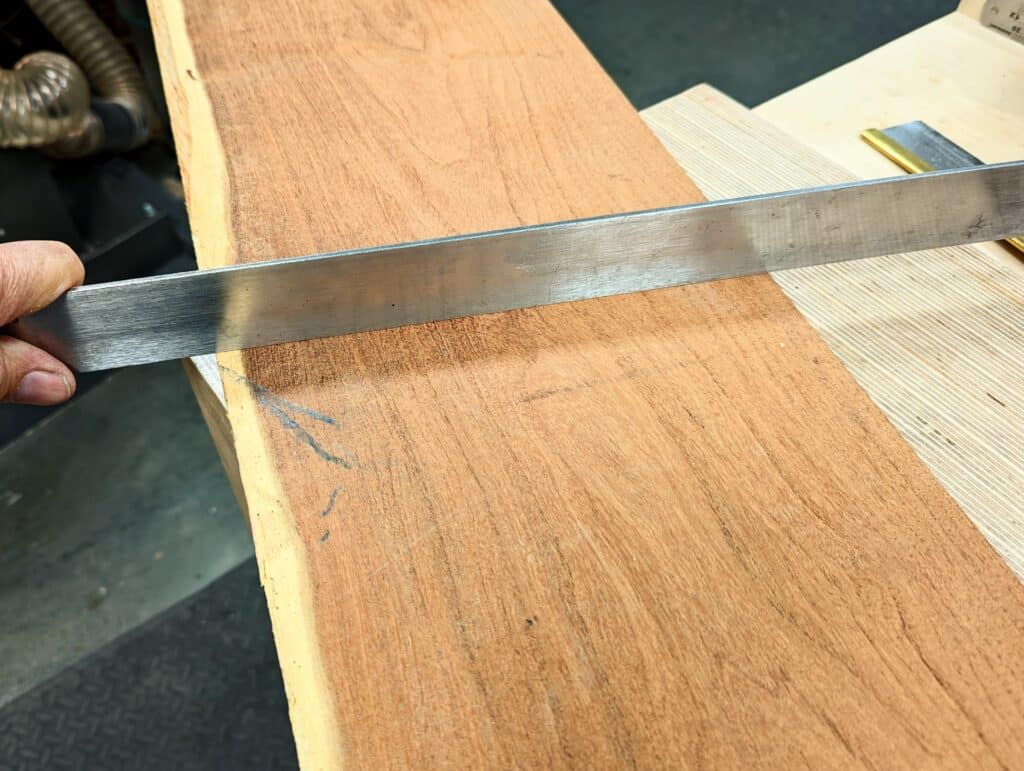


Mesquite is hard to come by in the Northeast US.
When I see pictures of samples the wood has checks and cracks running throughout the length of the boards. Even then they want $20 a board foot and that’s not including taxes and shipping.
How old was that tree that you got those boards from do you suppose?
I’m assuming you air dried them, how did you manage to get really nice clear boards?
Paul: re: your comment on not barbequeing because you are a vegetarian—I am also a diabetic and my brother and I are avid grillers. When used on light side, woods such as mesquite impart a special, and very delicious, flavour to grilled vegetables. A lot like working with wood. Takes practice
Thanks Paul. One year I visited my brother in Austin Texas and stopped by Woodcraft. They had some mesquite there so I bought enough to make one of your clocks. It’s beautiful. Enjoyed the experience but glad I don’t need to work with it daily via hand tools. The smell/fragrance of the shavings is wonderful. Saved all of them and gave those to an in-law so he could smoke his meat with it. I have a few small offcuts remaining that I am saving for accents in future projects.
Vegetables on the grill are excellent.
I have a backyard mesquite tree in southern Nevada and save the thicker branches when it requires trimming. I haven’t done much with them yet, just letting them age in the garage at the 8-15% “humidity” of the desert. I am really enjoying your descriptions of mesquite and look forward to working with it myself.
Thank you Paul.
Your article further confirms that I’m fortunate to have a 3″ Square post of Mesquite in my workshop. I planed it and I got that unique smell and the same shavings as you.
I plan to make a wooden jack plane from it.
Cheers Alan
I too find the scent of mesquite pleasing. I’m not sure why but it must be my skin chemistry and the tannin but mesquite will give me a blue stain on my hands when I work it.
I have a story about distinctive timber smells.
Down here (Australia) we have a beautiful timber called Huon pine. It is unique to Australia and only grows in the north west corner of Tasmania, the island off the bottom of Australia. It has a very distinctive smell and is a beautiful timber to work with, despite being a scrappy, ugly tree.
It was a favourite of boat builders, but can now no longer be harvested. Any timber sold today comes from salvaged logs that have sometimes been under water or mud for hundreds of years. Yep.
The trees take 500 years to reach maturity and can live for well over 2,000 years.
Anyway, a couple of years ago I was in my shed (Sydney) working with some Huon pine and my then 18 year old daughter came out to see what I was up to. I gave her a piece of Huon and said, ‘Smell this.’
She took a whiff and said, ‘That smells like Tasmania.’
She knows nothing at all about Huon pine, but two years before that she spent a week in Tasmania on a school trip and would have gone to markets and shops and a museum or two and somehow that smell was something she remembered. It must permeate the air down there, though I’ve been to Tasmania a dozen times and never noticed it. She has a very good sense of smell, but that amazed me.
Paul,
How could you live in Texas and not eat BBQ? 🙂
I moved away before I saw how beautiful Mesquite when made up rather than burnt. I hope to get back there soon to work the wood into furniture.
Thank you for the pictures and story.
Fascinating, thank you Paul. I’m 35 now and to think you were out in Texas harvesting timber and providing for your family with woodworking at this point is amazing for me.
great article. I live in Arizona and have access to a few varieties of mesquite, some of which grow to significant widths. I have built tables, cutting boards, etc. from this wood and love the results I have had on my projects.
I’m reading this while on holiday in Greece… the spindley nature of the mesquite trees reminds me of olive trees. The wood seems to be a similar colour, and Paul talks of “beans” on the limbs. Olives look like beans. Are the trees related perhaps? Are the woods similar to work? Anyone know?
Matt
The colour is nothing like and neither is the wood structure, not in real life. mesquite will grow a good-sized stem. I have had them 30″ in diameter and 8-10-feet tall in a single stem down alongside the Nueces river near Uvalde where I lived. Also, Olives are a fruit and not legumes so nowhere near related.
OK.,. Thanks for the information Paul.
Regards,
Matt
Matt, you are right, mesquite and olive trees both belong to the family of fabaceae, like peas and beans !
As I said, mesquite is a legume not a fruit. Olives are fruit not legumes and come in the same category of drupes which includes fruits with stones, so peaches, mangoes plums and such. Legumes on the other hand are not fruit per see, and so not one and the same and certainly the wood and the colour of them are very different. Mesquite wood and tree is a radically different wood and tree to olive wood and tree.
I think olives are Oleaceae?
Paul, mesquite wood is definitely one of my favorites for wood turning. It has such beautiful grain and finishes like glass. It is hard to come by and I treasure any pieces that I am able to pick up. Try to use it tfor those special projects that come to mind. Thank you for sharing your work and your thoughts, I always enjoy reading your work.
Thank you through this post for answering my question from your previous post on rough stock. Mesquite is an interesting wood. I have only been really aware of the species from when I lived in Abilene, Texas in the early 1980s; that was the most prevalent tree in that area and there were some good specimens but much of it was just scrub.
I have some pieces of mesquite that were given me for BBQ smoker firewood which I will have to inspect and see if I can get any useful wood from. One use I can see would be winding sticks because of the stability of the wood.
Very interesting description, I’ll have to try and find some small pieces here in the UK for boxes or something. The closest experience I have to your description, I think, is a couple of boards of Zebrano wood I bought online. They finished beautifully, but were really tough. They didn’t have the “creaminess” of something like Sapele, and when they tore out, it seemed to just happen at random! Tough on the saws and chisels too, but just a good experience to work with. I don’t suppose it’s particularly sustainable and obviously not native to the UK, so not something I would normally pick up, but glad I did for this one off project (a clothes drier).
I wonder how it wood turns? does the different chip from woodturning make a difference in spiral grain?
Mesquite is one of the best and easiest woods to turn and the finish is like glass.
its amazing how a smell can take you back. 40 years ago I lived in the UK, where I first smelt true Coal. Now if I smell coal it takes me right back to the UK in my mind.
I now live in Arizona and see the spindly Mesquite trees along our roads, nice to know that they grow bigger and thicker.
Paul,
Of the numerous rocking chairs (your design) I have made, from different woods, I love my mesquite version the most. However, perhaps like you, I discovered I am highly allergic to the wood. Sadly, no more mesquite building for me!
I love mesquite. I use it quite a lot. I live in Tombstone, AZ. I’ve made chairs, tables, fireplace mantels, and wood carvings from mesquite. My has four large mesquite logs laying on the ground and I have some rather large 2″ slabs waiting for me to do something with them. It’s my favorite wood. I made my winding sticks that you demonstrated how to make from mesquite. I’ve seen all the images you’ve shared of the furniture you’ve built from it. Such beautiful pieces! Anyway, thank you Paul for all your videos and writings. I’ve learned so much valuable information from you.
Clay,
I love to carve caricatures, most have been basswood. I’d love to try some mesquite but I wonder if my well aged hands are a match for the task.
How difficult do you find carving, with sharp tools of course?
Thanks for your reply!
From Colorado Springs
We Texans can thank the Spanish explorer Coronado for these mesquite trees that are everywhere. He brought sacks of the beans from Mexico to feed his horses as he explored the American Southwest and into Texas
A few centuries of animals eating and um… “dropping” the beans later and these trees have covered a lot of Texas.
Maybe I will make something from it one day instead of burning it.
I am fortunate to live in a small town in central Texas, a short (as distances go in Texas) drive from a mill that saws mesquite, pecan and a few other specie. I’ve been interested in, and working with, mesquite for over 30 years. My one regret is that the price of what was once regarded as a “trash” tree has now gotten to around $16/bf at the mill, and frequently in excess of $20/bf at retail, when the yards have it.
Hi Paul.
Further on from my earlier comments; I’ve started working what I’m hoping and suspect is Mesquite. I’ve made a panel gauge. It certainly quickly blunts my plane blades and is verybrittle. My main question is about further describing the aroma: for me this is like sweet Cumin. Would you agree?
Thanks again. Cheers Alan